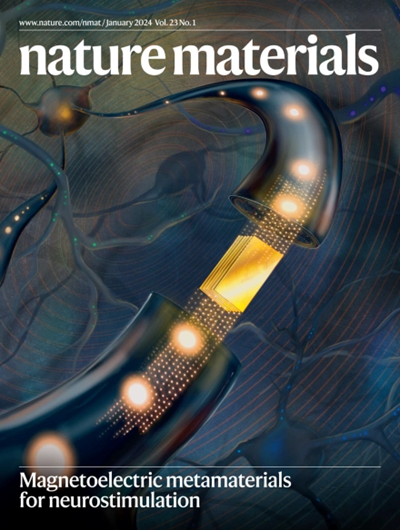Solvent co-intercalation in layered cathode active materials for sodium-ion batteries
IF 38.5
1区 材料科学
Q1 CHEMISTRY, PHYSICAL
引用次数: 0
Abstract
Solvent co-intercalation, that is, the combined intercalation of ions and solvent molecules into electrode materials, is an additional but much less explored lever for modifying the properties of metal-ion battery electrodes (metal = Li, Na, Mg, etc.). Knowledge on solvent co-intercalation is relatively scarce and largely limited to graphite anodes, for which in sodium-ion batteries, the co-intercalation of glyme molecules is fast and highly reversible. The use of co-intercalation for cathode active materials (CAMs) remains much less explored. Here we investigate for a series of sodium-layered sulfide CAMs (NaxMS2, M = Ti, V, Cr and mixtures) under which conditions solvent co-intercalation occurs and how this process impacts the phase behaviour, electrode breathing, redox potential and cycle life compared to ‘Na+-only’ intercalation. Co-intercalation is a complex process that can, for example, cause opposing fluxes, meaning that solvents intercalate into the CAMs while sodium ions simultaneously deintercalate. Co-intercalation leads to layered structures that can include different amounts of confined solvated ions, ions and unbound solvent molecules. It is an approach to designing structurally diverse, layered materials with potential applications for batteries and beyond. Solvent co-intercalation into graphite anodes for sodium-ion batteries is common; however, intercalation into cathodes is much less explored. Here, using operando experiments as well as theory, solvent co-intercalation in a range of layered sulfides is investigated.


钠离子电池层状正极活性材料的溶剂共嵌入
溶剂共插层,即离子和溶剂分子联合插入电极材料,是一种额外的但很少被探索的改变金属离子电池电极性质的手段(金属= Li, Na, Mg等)。关于溶剂共插层的知识相对较少,并且主要局限于石墨阳极,而在钠离子电池中,glyme分子的共插层是快速且高度可逆的。在阴极活性材料(CAMs)中使用共插层的研究还很少。在这里,我们研究了一系列钠层硫化物CAMs (NaxMS2, M = Ti, V, Cr和混合物)在何种条件下发生溶剂共插层,以及与“仅Na+”插层相比,该过程如何影响相行为、电极呼吸、氧化还原电位和循环寿命。共插层是一个复杂的过程,例如,它可以引起相反的通量,这意味着溶剂插入到cam中,而钠离子同时脱插。共插层导致层状结构,可以包括不同数量的受限溶剂化离子、离子和未结合的溶剂分子。这是一种设计结构多样、分层材料的方法,在电池等领域具有潜在的应用前景。
本文章由计算机程序翻译,如有差异,请以英文原文为准。
求助全文
约1分钟内获得全文
求助全文
来源期刊

Nature Materials
工程技术-材料科学:综合
CiteScore
62.20
自引率
0.70%
发文量
221
审稿时长
3.2 months
期刊介绍:
Nature Materials is a monthly multi-disciplinary journal aimed at bringing together cutting-edge research across the entire spectrum of materials science and engineering. It covers all applied and fundamental aspects of the synthesis/processing, structure/composition, properties, and performance of materials. The journal recognizes that materials research has an increasing impact on classical disciplines such as physics, chemistry, and biology.
Additionally, Nature Materials provides a forum for the development of a common identity among materials scientists and encourages interdisciplinary collaboration. It takes an integrated and balanced approach to all areas of materials research, fostering the exchange of ideas between scientists involved in different disciplines.
Nature Materials is an invaluable resource for scientists in academia and industry who are active in discovering and developing materials and materials-related concepts. It offers engaging and informative papers of exceptional significance and quality, with the aim of influencing the development of society in the future.
 求助内容:
求助内容: 应助结果提醒方式:
应助结果提醒方式:


